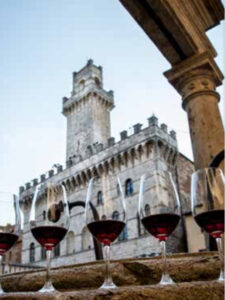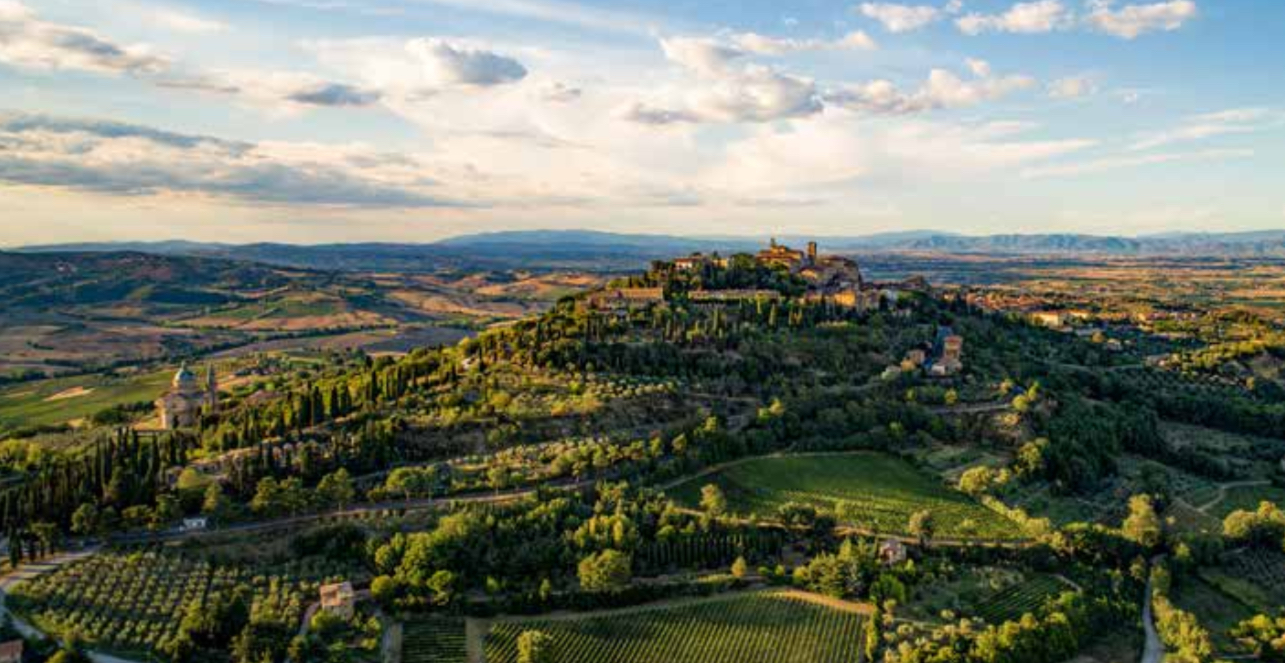A historic evolution ready to hit the market
 In February 2025, wine lovers will meet a new face of a classic Tuscan red: Vino Nobile di Montepulciano “Pieve”. The latest addition to Italy’s first-ever DOCG wine denomination has officially been approved and is set to debut with the 2021 vintage.
In February 2025, wine lovers will meet a new face of a classic Tuscan red: Vino Nobile di Montepulciano “Pieve”. The latest addition to Italy’s first-ever DOCG wine denomination has officially been approved and is set to debut with the 2021 vintage.
On October 10, 2024, the Italian National Wine Committee gave final approval to the updated production regulations, which were published in the Official Gazette on February 5, 2025. This marks the end of a long journey of research, debate, and collaboration—and the beginning of a new era for Vino Nobile.
The name “Pieve” is not just a label; it’s a statement. It refers to the ancient parish territories—or “pievi”—that have shaped the Montepulciano countryside since Roman and Lombard times. These zones were more than religious districts; they were cultural and agricultural centers, deeply intertwined with the landscape and its people. Today, those same names reappear on wine labels, thanks to a project that combined geological mapping, historical research, and community consensus. The Consortium of Vino Nobile began zoning its production area as far back as the 1990s, becoming a pioneer in Italy. Their work led to the identification of 12 Additional Geographical Units (UGA), each with its own distinct soil types, microclimates, and viticultural heritage.
Among them: the sandy, clay-rich soils of Ascianello; the fluvio-lacustrine terraces of Badia; the coarse sandy layers of Caggiole; the silty, structured terrain of Cervognano; and the historic borderlands of Valiano. Each Pieve tells a story—not just of geology, but of centuries of cultivation, tradition, and identity.
The new “Pieve” category will account for roughly 10% of total Vino Nobile production, or about 600,000 bottles per year, according to early estimates from the Consortium. The rules are strict: all grapes must be estate-grown, harvested exclusively from the same subzone noted on the label. Only Sangiovese (locally called Prugnolo Gentile) and a small number of approved native varieties are allowed. And before official certification, each wine is first reviewed by an internal technical panel of oenologists. It’s a move that not only redefines the boundaries of Vino Nobile but raises the bar for quality and traceability.
The Pieve project is more than a regulatory update—it’s a return to roots. The decision to draw from historical documents, including the 18th-century Leopoldine Cadastre, and to base the wine’s identity on ancient territorial units reflects a broader ambition: to offer a wine that’s deeply tied to its place of origin, in both taste and meaning. With its launch, the Consortium isn’t just adding another label to the shelves. It’s presenting a new way of understanding and appreciating Vino Nobile di Montepulciano—one that’s grounded in terroir, shaped by history, and backed by rigorous winemaking. In 2025, the Pieve wines will bring with them not only elegance and complexity, but a renewed sense of purpose. This is Montepulciano seen through a magnifying glass: precise, powerful, and profoundly rooted.

